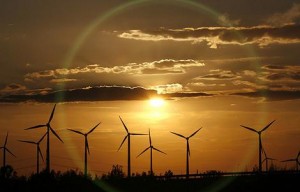 THUNDER BAY – Opposition to Ontario’s Green Energy Act appears to be growing. Today, The Oppose Belwood Wind Farm Action Group (OBWF) is joining Wind Concerns Ontario and community groups from over 50 other municipalities, in a campaign to restore the rights of local municipalities and their citizens to have any say in the industrialization of rural Ontario through massive wind turbine projects.
THUNDER BAY – Opposition to Ontario’s Green Energy Act appears to be growing. Today, The Oppose Belwood Wind Farm Action Group (OBWF) is joining Wind Concerns Ontario and community groups from over 50 other municipalities, in a campaign to restore the rights of local municipalities and their citizens to have any say in the industrialization of rural Ontario through massive wind turbine projects.
In a media statement issued by the group, they state, “Under the new provincial Green Energy Act, the Ontario Liberal government is fast tracking so-called ‘green’ renewable energy projects in a bid to meet its promise to eliminate coal-fired generating plants. In so doing, it has bypassed planning powers of municipalities and infringed on the democratic rights of their citizens”.
In Thunder Bay there were concerns on this issue raised last week at City Council in deputations from individuals in opposition to the Horizon Wind Energy project slated for the Norwester chain of mountains.
Wind Concerns Ontario, a coalition of citizen’s groups from across the province, are organizing a demonstration on April 28, 2010 at 11:00 a.m. at Queen’s Park to demonstrate the growing opposition to the Green Energy Act and the destruction of quality of life through the installation of massive industrial wind turbines in rural agricultural communities.
“The impact of these wind turbine projects on human and animal health and their potential effect on wildlife, including birds and bats, are still not well understood,” claims Silvana Sangiuliano. “There are no adequate, independent studies to determine why some people living near industrial wind turbines are getting ill and are often forced to move. The Ontario government must do its duty to protect its citizens and ensure that proper research on health is done first before more industrial wind installations are built”.
The impact on human health according a report from the Pembina Institute is in effect a non-issue. “For decades, thousands of people in Europe have lived and worked near wind turbines. A relatively small number of people have reported experiencing conditions such as headaches and difficulty sleeping, which has prompted numerous studies for peer-reviewed scientific journals and government regulatory bodies”.
The Pembina Institute adds, “A 2006 study for the UK Trade and Industry Department found ‘there is no evidence of health effects arising from infrasound or low frequency noise generated by wind turbines,’ while the UK National Health Services found ‘no conclusive evidence’ that wind turbines have an effect on health.”
Silvana adds, “Despite the Ontario government’s rush to introduce wind farms across the province, wind energy is an ineffective strategy for achieving carbon emission reductions in the fight against global warming. Wind generates power only intermittently, and every megawatt of installed wind or solar power must be backed up by an equivalent megawatt of nuclear, coal, natural gas, or hydroelectric generating capacity”.
This is a claim disputed by the proponents of wind energy projects. The Pembina Institute which supports Ontario’s Green Energy Act states, “Generating electricity with a wind turbine emits no greenhouse gasses, and every unit of electricity produced can be used to replace power from fossil fuel plants.
“Denmark increased its reliance on wind power from 3% of its total electricity supply up to 19.7% between 1991 and 2007. That, along with other measures, reduced emissions from electricity production by 30% over the same period, while the country’s GDP grew by 45%,” according to a report from the Institute.
The Pembina Institude adds, “It does take energy to build a wind turbine, but life-cycle studies done by Risø laboratories in Denmark found that this energy is quickly recovered once the turbine is functioning. It takes about 100 MWh of energy to build a typical wind turbine that will generate between 7,500 MWh to 9,000 MWh in its lifetime, so the electricity required for manufacturing is recovered within roughly three months”.
Sangiuliano responds, “In other words, we must continue to depend on and expand the conventional base-load power infrastructure system at the same time that billions of dollars are going to renewable energy projects. Ontario consumers will pay for this misguided strategy for years to come through higher taxes and higher electricity bills. To entice energy companies to develop industrial wind and solar energy, the province is guaranteeing substantial 20-year premiums for the electricity they feed into the grid”.
“In what can only be seen as a suspect strategy to create a few jobs now and shift costs to the future, the Ontario government is foisting huge turbines, 40 storeys or more high, on rural communities in a process of industrialization that is ravaging hundreds of thousands of hectares of beautiful countryside. At the same time, the objections of local municipalities and citizens are being silenced by the Green Energy Act”.
“The only beneficiaries of the government’s renewable energy policy would appear to be the energy companies who will be profiting for decades from their lucrative feed-in tariff contracts,” concludes Sangiuliano.
Links:
